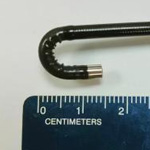
Seeing Clearly, Caring Deeply, Your Partner in Animal Health
Endoscopy Solution to Animal Respiratory Tract

Recommended Products
Veterinary Flexible Endoscope
Technical parameters:
| Model | RAE-201 |
| Outer diameter | 3.0 mm |
| Inner diameter | 1.2mm |
| Working length | 600mm |
| Bending angle | 180° |
| Steering direction | Up & down |
| Pixels | 160,000 |
| Depth of field | 5~50mm |
| Field angle | 120° |
| Accessories | biopsy forceps, Y-shape valve, Luer three-way connector, cleaning brush and etc. |
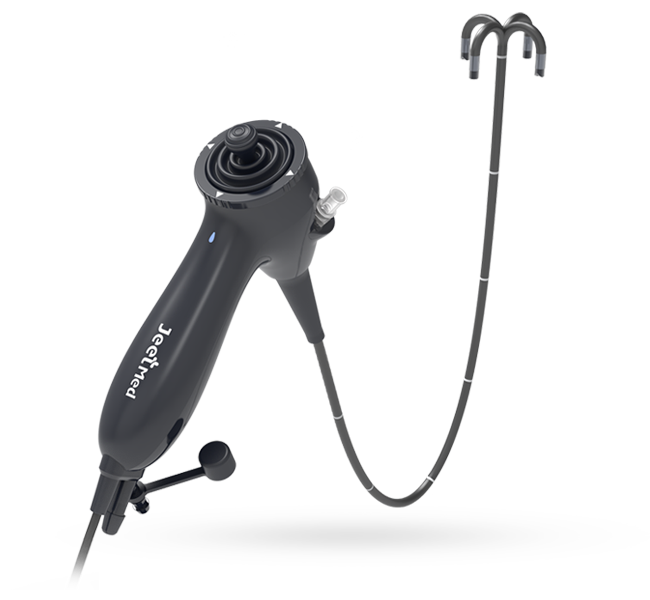
Main advantages to compared with other brands


Ultra-thin diameter
3mm outer diameter and 1.2mm inner diameter
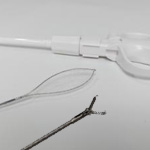
Foreign body removal
Use 1.0mm net forceps or 1.0mm alligator forceps
JeetVet Endoscope
Endoscopy Solution to Animal Respiratory Tract
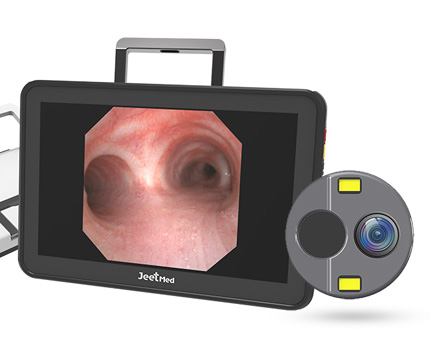
Complex Anatomical Structures
JeetVet endoscopes offer high-resolution, real-time imaging that enables veterinarians to navigate the intricate and variable respiratory anatomy of different animal species with precision. The enhanced visibility allows for accurate localization and assessment of lesions, reducing the difficulty associated with the complex structures of the respiratory tract.
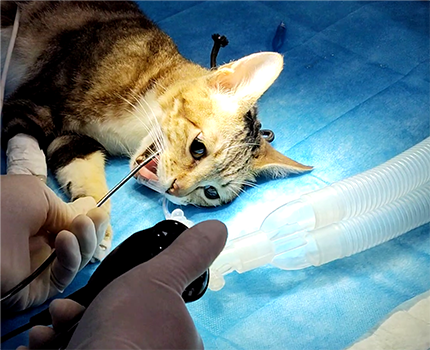
Low Animal Cooperation
JeetVet endoscopes facilitate minimally invasive procedures, which are less distressing for animals compared to traditional methods. This reduces the need for extensive sedation or anesthesia, thereby minimizing the associated risks and enhancing the animal's cooperation during examinations and treatments.
Swift diagnosis: Endoscopic procedures are quick, reducing animal stress and response times.
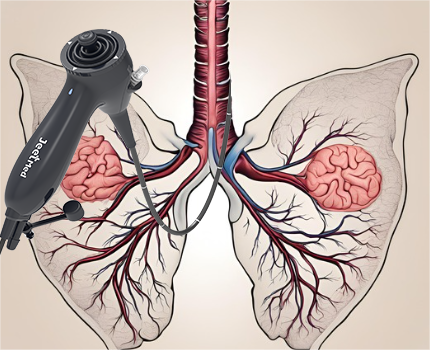
Detection of minor lesions
The advanced imaging capabilities of JeetVet endoscopes allow for the detailed observation of even the smallest lesions within the respiratory tract. This aids in the early detection of tumors, inflammation, and foreign bodies, enabling timely and effective intervention.
Biopsy Sampling:Endoscopes allow for biopsy sampling through operational channels, obtaining lesion tissues for further pathological analysis to ensure accurate diagnoses.
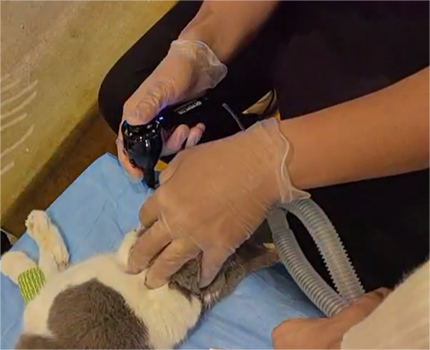
Management of infections and inflammations
JeetVet endoscopes enable direct visualization of infected and inflamed areas, allowing for precise and targeted treatments. This includes the ability to perform biopsies, and conduct thorough debridement, leading to better management of respiratory infections and inflammations.
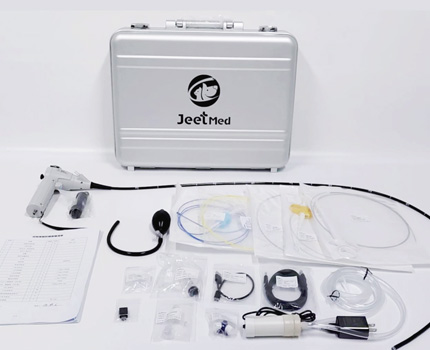
Overcoming technological limitations
The flexible design of JeetVet endoscopes overcomes the limitations of traditional endoscopes. Their adaptability and high maneuverability provide comprehensive access to all regions of the respiratory tract, ensuring thorough examinations and treatments.

Time and Cost of Diagnosis and Treatment:
Efficient diagnosis:Endoscopic examinations are rapid and accurate, reducing the need for unnecessary auxiliary tests, shortening diagnosis and treatment time, and lowering overall costs.
Reduced hospitalization time:Due to the minimally invasive nature of endoscopic operations, animals recover quickly post-surgery, resulting in shorter hospital stays and reduced subsequent care costs.
Respiratory Tract Examination and Treatment
Challenges in Diagnosing Animal Respiratory Tract Conditions
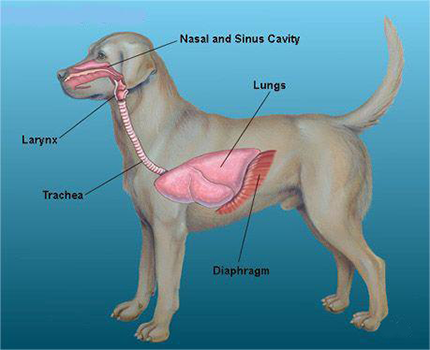
Complex Anatomical Structures: The respiratory anatomy of animals is highly complex and varies significantly among different species and even individual animals. For example, the nasal passages and pharyngeal areas of dogs and cats are narrow and intricate, making accurate diagnosis and treatment difficult.
Low Animal Cooperation:
Many animals exhibit significant anxiety and resistance during respiratory examinations and treatments, complicating the procedures.
Detection of Small Lesions:
Small lesions within the respiratory tract, such as early-stage tumors, inflammation, or foreign bodies, are often difficult to detect using conventional imaging techniques like X-rays or CT scans.
Management of Infections and Inflammation:
Accurate diagnosis and treatment are crucial for managing respiratory tract infections and inflammation. Traditional methods may not provide direct visualization and assessment of lesions, potentially resulting in suboptimal treatment outcomes or recurrent infections.
Technical and Equipment Limitations:
Traditional respiratory diagnostic and treatment tools, such as rigid and conventional endoscopes, may not be well-suited to the complex structures of the respiratory tract. They often lack flexibility and provide limited visibility.
Time and Cost of Diagnosis and Treatment:
Complex respiratory examinations and treatments often require extended time and incur higher costs. The elaborate steps and prolonged anesthesia increase the risks for the animal and extend recovery times, adding financial burdens to both veterinarians and pet owners.
Advantages and Features
Why JeetVet Endoscope
Visualization of respiratory tract structures
Provides detailed visualization of respiratory tract structures, facilitating the diagnosis and treatment of respiratory diseases.
Application
Used for examining the respiratory tract of animals.
Respiratory tract examination
The veterinarian looks for abnormalities such as polyps, tumors, infections, or foreign objects.
Biopsy and Treatment
Tissue samples can be collected, and treatments such as removal of foreign objects or application of medication can be performed.
High-Resolution Cameras
Crucial for detailed visualization of respiratory tract structures.
Advanced Lighting
LED lighting ensures bright and accurate illumination.
Portable Units
Important for veterinarians who perform procedures in different locations or in field settings.
Ease of Use
Easy to operate with a short learning curve, the endoscope allows veterinarians to quickly become proficient. It connects to smartphones and tablets for real-time HD image display, enhancing efficiency with intuitive controls.
Treatment Items
More Animal Examination and Treatment Solutions
Need Assistance?
As a leading player in our industry, we are committed to fostering mutually beneficial partnerships that drive success and growth.
Contact NowWant to Become Our Distributor?
We provide high-quality products, professional training, market support and technical support to help you develop the market and create success together!
Distributor- *Name
- *Tel
- *Title
- *Content


